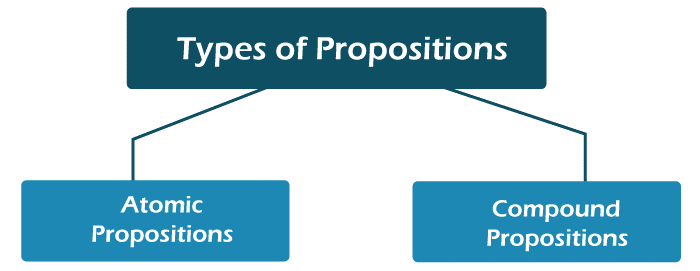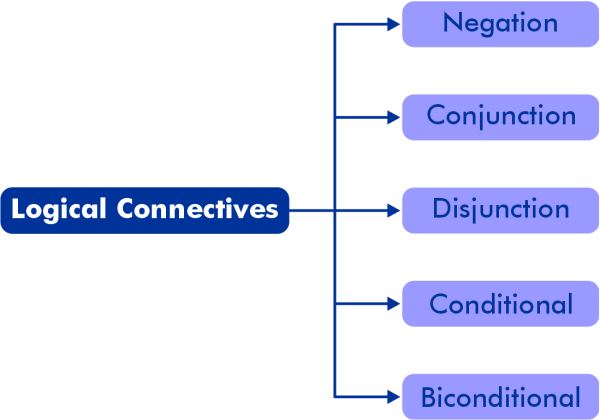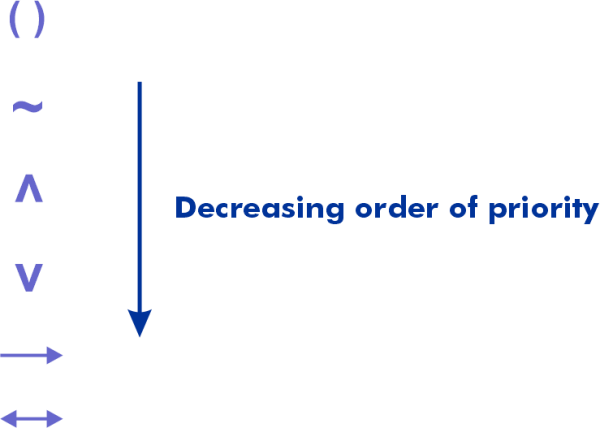Logical Connectives in Discrete mathematicsIf we want to learn the logical connectives, we have to first learn about the propositions. After that, we can understand the logical connectives. PropositionsThe proposition can be described as a declarative statement, which means it is used to declare some facts. Propositional logic can be indicated as either true or false, but we cannot indicate it in both ways. In this section, we are going to learn about the connectivity in propositional logic. 
Logical connectivityLogical connectivity can be described as the operators that are used to connect one or more than one propositions or predicate logic. On the basis of the input logic and connectivity, which is used to connect the propositions, we will get the resultant logic. The propositional logic is used to contain 5 basic connectives, which are described as follows:

Names of connectives, connective words, and symbols of Propositional logic are described as follows:
Now we will discuss all of these connectives one by one, which is shown below: Negation The symbol ∼ is used to indicate the negation. If there is a proposition p, then the negation of p will also be a proposition, which contains the following properties:
Truth table: The truth table of negation is shown below:
Example: The example to show the negation is described as follows: Conjunction The conjunction is indicated by the symbol ∧. If there are two propositions, p and q, then the conjunction of p and q will also be a proposition, which contains the following properties:
Truth table: The truth table of conjunction is shown below:
Example: The example to show the conjunction is described as follows: Disjunction: Disjunction is indicated by the symbol ∨. If there are two propositions, p and q, then the disjunction of p and q will also be a proposition, which contains the following properties:
Truth table: The truth table of disjunction is shown below:
Example: The example to show the disjunction is described as follows: Conditional: The conditional propositional is also known as the implication proposition. It is indicated by the symbol →. If there are two propositions, p and q, then the conditional of p and q will also be a proposition, which contains the following properties:
Truth table: The truth table of implication is shown below:
Example: The example to show the implication proposition is described as follows: Bi-conditional: The bi-conditional propositional is also known as the bi-implication proposition. It is indicated by the symbol ↔. If there are two propositions, p and q, then the bi-conditional of p and q will also be a proposition, which contains the following properties:
Truth table: The truth table of bi-implication is shown below:
Example: The example to show the bi-implication proposition is described as follows: Important Notes:There are some important notes related to logical connectives, which are described as follows: Note 1:
Note 2:

Note 3:
|
 For Videos Join Our Youtube Channel: Join Now
For Videos Join Our Youtube Channel: Join Now
Feedback
- Send your Feedback to [email protected]
Help Others, Please Share









